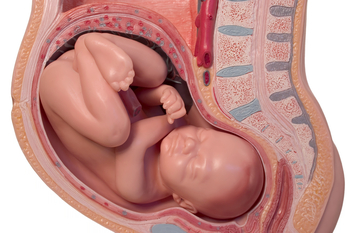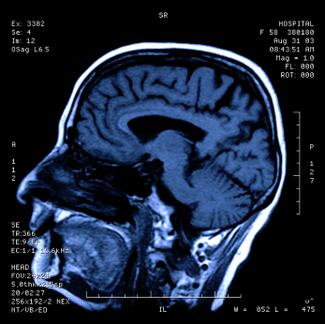One of the first steps in evaluating brain injury is diagnostic imaging. Imaging refers to various methods of viewing the structures and processes residing in the brain. Some of the more familiar modalities are CT (or CAT) scans, which use X-rays to evaluate intracranial structures. MRI, Magnetic Resonance Imaging, uses magnetic fields to illustrate the brain. However, in cases of traumatic brain injury (TBI), more advanced methods may be needed for proper diagnosis.
An MRI machine can use special software to perform a brain scan called Diffusion Tensor Imaging (DTI). This scan detects the diffusion of water across brain cells and highlights certain areas that may be associated with injury. These injuries may not be apparent on conventional MRI’s.
PET scan (Positron Emission Tomography) measures uptake and metabolism of glucose from a small radioactive “tagged” sample injected into the patient. The scanner monitors this sample as the brain utilizes it. The metabolic uptake and usage may differ in patients who have suffered a brain injury. This helps define the extent and type of injury.
In SPECT (Single Photon Emission Computed Tomography), the tagged sample is not absorbed or utilized in the brain cells. Instead, it remains in the blood stream and demonstrates the blood movement or perfusion through the brain. Areas of brain injury or damage may not have normal blood flow so the SPECT scan helps define these areas.
Brain injuries can result from medical malpractice. A baby may suffer birth trauma during labor and delivery. A child may have a concussion or sports injury misdiagnosed or improperly evaluated by a physician. An individual injured in a car accident may not have the indicated testing done by the emergency room. Although scientific progress in imaging studies has improved the ability to diagnose and evaluate brain injuries, these tests need to be utilized in the appropriate situations so patient results and outcomes can improve.
Topic: Aneurysm, Birth Injury, Brain Injury, Failure to Diagnose, Falls/Fractures, High Blood Pressure, Hydrocephalus, Infection, Lumbar Puncture, Meningitis, Paralysis, Placental Abruption, Spinal Injury, Spinal Tap, Stroke Comments Off on Advanced Diagnostic Imaging for Acquired Brain Injury
The brain is responsible for higher motor and sensory functions. It requires a constant source of oxygen in order to continue its vital functions. When the flow of oxygen is interrupted, the consequences can be devastating. Severe injury can occur when the brain lacks the oxygen needed to continue functioning. A total lack of oxygen can be referred to as “anoxic” injury whereas a partial lack of flow can be referred to as “hypoxic” injury.
Brain injury can occur in an unborn baby if the flow of oxygen from the mother’s circulation to the baby’s is interrupted. This can happen from a number of causes. For example, the placenta can become partially detached from the wall of the uterus (placental abruption), which can interrupt the flow of oxygen to the baby. This complication can arise in pregnant patients with untreated or inadequately treated high blood pressure. Close monitoring of mother and baby, along with timely delivery and/or C-Section when needed can prevent these complications.

Excessive contractions of the uterus (sometimes called “uterine hyperstimulation” or “tetanic contractions”) from labor, or from medicines used to accelerate labor, like pitocin, can cause problems with the baby’s oxygen supply. The rapid, powerful contractions of the uterus can prevent maternal oxygen from reaching the baby. If the flow of oxygen to the baby is interrupted, hypoxic or anoxic brain injury can occur. The consequences of this can be severe and may include seizures, brain damage, developmental delay, cerebral palsy, and other problems with motor or cognitive functions. Use of medications like pitocin must be closely monitored by dosage and effect on the mother and baby. If contractions are too strong or too frequent, the dosage may need to be decreased, the medicine may need to be stopped entirely, or special medication to reverse the effects may be given.
Brain injuries may occur in infants, children, and adults. Stroke, cardiac arrest, or choking can all interrupt the flow of oxygen to the brain. Patients who are undergoing surgery, or are in an intensive care unit in a hospital often have their oxygen levels monitored to be sure they are getting a sufficient supply. If they are not properly monitored or complications occur, hypoxic or anoxic brain injuries may result.
Medical malpractice that results in brain injury is devastating for the victim as well as families and loved ones. The extent of disability from hypoxic or anoxic brain injury varies greatly, but many people require extensive care and rehabilitation to regain function and improve their quality of life.
Topic: Birth Injury, Brain Injury, Cerebral Palsy, Failure to Diagnose, High Blood Pressure, Placental Abruption Comments Off on Brain Injuries and Birth
Premature birth can often result in complications for the newborn. Preterm or premature birth refers to babies born before 37 weeks of a normal 40 week long pregnancy.
Some complications that can affect babies born prematurely are lung complications from lack of pulmonary maturity or development. Eye problems can result in vision difficulties or blindness. Premature babies may be more prone to infections and intestinal problems. They also are at increased risk for bleeding in the brain which can have devastating effects. Conditions ranging from learning disabilities to cerebral palsy and seizures are more common in babies born prematurely.
Thus it is extremely important that premature labor be diagnosed in a timely fashion by the patient’s health care provider. Steps can be taken to treat the underlying cause of the preterm labor. For example, if a maternal infection is present that is related to the preterm contractions , the infection needs to be diagnosed and treated. Certain conditions, such as twins, increase the risk of premature labor. Also, some anatomic abnormalities of the cervix or uterus can elevate the risk as well.
Although it may not be possible to prevent premature birth, certain steps can be taken to prolong the time until delivery. This may give time for medications to be administered that may significantly improve the newborns outcome by enhancing lung development or decreasing the risk of intestinal problems. Infections that are properly diagnosed and treated may likewise improve the premature baby’s situation.
Medical malpractice may occur when a pregnant patient’s symptoms, such as premature contractions, bleeding, or rupture of membranes are not properly evaluated and managed. If needed interventions such as medication to improve lung function, or antibiotics, are not given in cases where they are indicated, malpractice may have occurred. An evaluation by attorneys with experience and knowledge of these complex medical and legal issues can help clarify issues for victims of medical malpractice.
Topic: Birth Injury, Brain Injury, Cerebral Palsy, Failure to Diagnose, Infection, Placental Abruption, Premature Birth Comments Off on Premature Birth May Result in Injury to the Newborn


